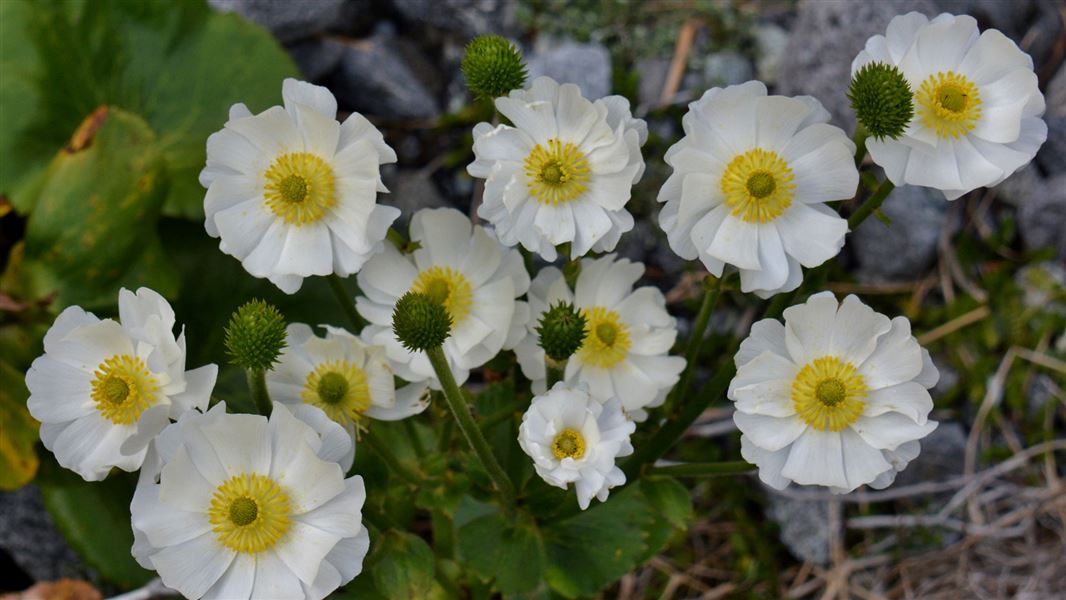Its flowering image has been used on postcards, stamps and even as a logo on the side of aircraft. It's particularly beautiful when seen growing in large numbers on a mountain hillside with its white flowers and large glossy leaves.
Quick facts
- The Mount Cook buttercup (Ranunculus lyallii) is one of New Zealand’s most well known alpine plants.
- It is the world’s largest buttercup.
- It can grow over a metre tall with leaves larger than the size of your hand. Some leaves have been recorded as big as 40cm across.
- The cup-like leaves will often hold water after a rainfall and trampers sometimes stop to slurp a drink from them.
Where is it found?
It grows in sub-alpine to alpine herbfields in the South Island mountains from Marlborough to Stewart Island from 700m to 1500m in altitude. It is well adapted to grow in infertile soils and it favours stream banks and damp locations in scrub and grasslands. Due to its ornamental flowers, the Mount Cook buttercup has also been cultivated. Plenty of water, good drainage and shade in hot areas are required and it is intolerant of high nutrient levels in soil.
Previously called the Mount Cook lily
Its large green leaves resemble a lily, but it belongs to the buttercup family and is sometimes known as the giant buttercup. When it was first discovered by Dr David Lyall in the mid 1800s he collected only leaves so it wasn’t till a decade later that it was identified as a buttercup when Sir Julius von Haast and Dr Andrew Sinclair collected flowering specimens.
A clever plant
The Mount Cook buttercup, along with others in the buttercup family, (the Ranunculaceae) has developed a very clever mechanism which aids in its survival in the harsh alpine environment. All plants have stomates in their leaves which let water in and out of the leaves and nearly all plants have their stomates on the cooler, shaded underside of the leaf so they are less prone to drying out.
But as the Mount Cook buttercup often grows among rocks which heat up during the day, the underside of its leaves are often warmer and in response it has evolved to have stomates on both surfaces of its leaves. Automatic controls in the leaves will close the lower stomates when the rocks warm up and open the upper ones where it is cooler to prevent the leaves from losing water. At the end of the day when the rocks cool down again, the stomates on the underside reopen, while the upper ones close.
Threats
Deer, chamois and Himalayan tahr have all taken a liking to our most famous buttercup. Over the years these introduced animals have decimated the numbers of Mount Cook lilies. It is also susceptible to damage from walkers and trampers when wandering off formed tracks. The Hooker Valley in Aoraki/Mount Cook National Park is a good example of how the species can recover once grazing animals are removed. In early summer the valley is full of flowering plants and is one of the most accessible places to view them.
